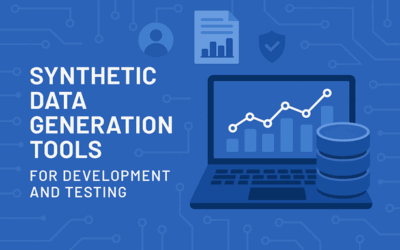Data Literacy and GDPR (Know Your Risk)
What Is Data Literacy?
Let’s start by defining data literacy. Here’s Wikipedia’s definition: Data literacy is the ability to read, work with, analyze, and argue with data. Much like literacy as a general concept, data literacy focuses on the competencies involved in working with data. So in short, data literacy simply means being able to understand data. The analogy with “regular” literacy isn’t perfect, however. The Wikipedia article goes on to say: It is, however, not similar to the ability to read text since it requires certain skills involving reading and understanding data. According to the two parts of the definition, we can conclude that data literacy means being able to analyze and understand data, but that goes well beyond simply reading it. It definitely involves further abilities (probability and statistics come to mind, for instance.)Why Is Data Literacy so Valuable?
To understand the motivations behind data literacy and why your organization should care about it, you just have to take a good look around. I mean, literally. Take a good look around the room you are in right now, and answer this question: how many internet-connected devices do you see? The minimum number will be obviously one. If you’re reading this on a computer, then the likely minimum answer is two, because I bet you have a smartphone on yourself. From there, the number can only go up: tablets, additional devices (an e-reader, perhaps?), a Google Home or Amazon Echo device, a smart thermostat, and so on. Why am I asking this? Simple: we live in a hyper-connected, data-driven era. In 2019, 188 million emails were sent daily, on average. This 2019 article claims that, by some point in 2020, the amount of digital data produced by humankind is expected to reach 44 zettabytes. That’s a number larger than what any of us could easily wrap our heads around, but that’s beside the point. The point is we produce and consume an amazing amount of data, and the trend shows no signs of slowing down—quite the opposite. Making sense of all that data is and will remain an essential skill for the twenty-first century.Welcome to the Brave New World of GDPR
The next piece in this puzzle is GDPR. Your knowledge of GDPR might range from “I’m mildly aware of it” to “I know quite a lot about it,” (especially if you live in Europe). If you belong to the former group, we’ll now fill you in. GDPR stands for General Data Protection Regulation. It is an EU regulation on data protection and user privacy. You can easily read its full text online, but we’ll give you the gist of it. Businesses that handle personal data (called controllers and processors) must design their processes in a way that provides safeguards to protect the data. That could include techniques such as pseudonymization or anonymization. Controllers must always use the most strict privacy settings by default. Processors can’t process any personal data except under one of six bases that GDPR stipulates (consent, contract, public tasks, vital interest, legitimate interest, or legal requirement.) When such processing is done via consent, the user has the right to revoke their consent at any time.GDPR Challenges
Now let’s put data literacy and GDPR together. What are some of the hardest challenges organizations face when it comes to GDPR compliance? How can data literacy help with those challenges? That’s what we’re going to see now.Locating Risk Points
The first challenge companies might face here refers to localizing the risky spots in their data. That might not be too hard if you only have a single, small database containing a few tables with not a lot of columns. But as we’ve just mentioned, we live in a data-driven world. Gone are the days when companies only gathered data through forms on their web pages. Nowadays, data is being increasingly generated via mobile devices. And let’s not forget IoT devices, whose ranks only grow larger by the day. All of that is to say that the simple-database-with-few-tables scenario we’ve described above is getting rarer and rarer. If you’re reading this post, you probably belong to a demographic that’s likely to have more data than less. Now imagine having to locate all the columns with personal data in a gigantic database containing hundreds of tables, each one with dozens of columns. Suddenly, that doesn’t look so easy anymore.Fixing Them (Remediation)
Locating the potential trouble spots in your data is hard enough, but it’s just the first step. After that, you’ll have to do something about them. This step is often called remediation. What does remediation look like when it comes to GDPR compliance? Put simply, the answer is data masking. Sensitive information, such as personally identifiable information (PII), needs to be properly obfuscated. Such masking can be done mainly in two ways: pseudonymization and anonymization. Pseudonymization is a process that replaces values in a sensitive field with a pseudonym, which is an artificial identifier. The main point of pseudonymization is that it allows the original information to be restored. Anonymization, on the other hand, refers to irreversibly de-identificating the data. Anonymization is supposed to be irreversible, while pseudonymization isn’t. The main challenge when it comes to remediation is that it’s a time-consuming and costly process. Engineers can spend months coding scripts to mask data, which represents a huge loss in opportunity cost. Then you have the possibility of these scripts containing bugs, which is pretty much a given. Even if the scripts are perfect, they still have to be maintained, causing you to incur more opportunity costs. In short: creating, validating, and maintaining data-masking scripts can represent an enormous waste for your organization.How Enov8 Can Help You
As you’ve just seen, the challenges organizations face when it comes to GDPR are hard to overcome. Fortunately, there are tools that can help you. For instance, Enov8 and its Data Compliance Suite. Enov8’s Data Compliance Suite (DCS) is a DataOps platform that has data compliance as one of its main focuses. One of the platform’s main capabilities is its data profiling feature, which employs AI to automatically find the risk areas we’ve mentioned in the previous section and can save your organization a huge amount of time and money. However, as we’ve mentioned before, locating the risk points is just the first step. The next and necessary phase is remediation, and Enov8 DCS can help there as well by providing powerful data-masking capabilities. Finally, DCS also provides a data-validation feature that allows you to check whether a given piece of data is properly obfuscated.Data Literacy & GDPR: Take Measures Today
Historically, digital security has always been a priority for companies that collect and handle consumer data. Failing to protect such data could lead to a financial or reputational catastrophe. But in this day and age, data security is even more important due to laws and regulations on consumer data, of which GDPR is certainly the most prominent example. Failure to comply will not only taint the reputation of your company; it will also cost you huge amounts of money in fines, and you could face legal consequences. Want your organization to stay alive and kicking? Then make digital security a top priority and give Enov8’s Data Compliance Suite a try today.This post was written by Carlos Schults. Carlos is a .NET software developer with experience in both desktop and web development, and he’s now trying his hand at mobile. He has a passion for writing clean and concise code, and he’s interested in practices that help you improve app health, such as code review, automated testing, and continuous build.
Relevant Articles
7 Synthetic Data Generation Tools for Dev & Testing
In software development and testing, having access to high-quality, realistic data is crucial. But real production data is often sensitive, regulated, or simply unavailable for testing purposes. Synthetic data generation tools provide a powerful alternative, enabling...
The SAFe Hierarchy and Levels, Explained in Depth
The Scaled Agile Framework (SAFe) is a comprehensive set of principles and practices designed to help organizations adopt agile methods on an enterprise level. It provides a set of guidelines and best practices that enable large-scale product development with agility....
DORA Compliance – Why Data Resilience is the New Digital Battlefield
How Enov8 Helps Financial Institutions Align with the EU's Digital Operational Resilience Act Executive Introduction As of January 2025, the EU's Digital Operational Resilience Act (DORA) has become legally binding for financial institutions operating across the...
Data Fabric vs Data Mesh: Understanding the Differences
When evaluating modern data architecture strategies, two terms often come up: data fabric and data mesh. Both promise to help enterprises manage complex data environments more effectively, but they approach the problem in fundamentally different ways. So what’s...
What Is Release Management in ITIL? Guide and Best Practices
Managing enterprise software production at scale is no easy task. This is especially true in today’s complex and distributed environment where teams are spread out across multiple geographical areas. To maintain control over so many moving parts, IT leaders need to...
Test Environment: What It Is and Why You Need It
Software development is a complex process that requires meticulous attention to detail to ensure that the final product is reliable and of high quality. One of the most critical aspects of this process is testing, and having a dedicated test environment is essential...










